Scotland’s strategic location, shipbuilding capacity, and skilled workforce must be central to the UK’s defence industrial strategy, according to Labour MP Graeme Downie, who on Wednesday called for the national armaments director to prioritise new frigates and investment in air defence.
Speaking during a Commons debate on the remit of the recently appointed National Armaments Director, Downie described the current defence moment as one of urgency and opportunity, aligning with the Prime Minister’s attendance at the NATO summit.
“This is not all about numbers on a spreadsheet or a press release,” he said. “The national armaments director will allow the UK to focus on how defence money is being spent to increase the lethality of our armed forces and ensure that the deterrent effect of the combined UK armed forces is sufficient to prevent a war that no one in this Chamber wants to see.”
Downie welcomed the new director’s mission to instil strategic coherence and efficiency into UK procurement, but warned that progress must be swift: “Only by doing so can we make sure our adversaries know that we are committed to our own defence.”
He singled out Rosyth as crucial to that effort, calling for urgent consideration of additional Type 31 frigates beyond the current five being built for the Royal Navy at Babcock’s facility in his Dunfermline and Dollar constituency.
“The Type 31 frigates being built at the Rosyth dockyard would seem to fit the bill,” he said, referencing the Strategic Defence Review’s call for “an ‘always on’ supply line for shipbuilding” and a “more powerful but cheaper and simpler fleet.”
HMS Venturer, the lead ship of the Type 31 class, was recently floated off, and Downie praised the workforce: “I will take this opportunity to once again thank the workforce at Rosyth for the incredible contribution they make to our nation’s defence in the construction of the Type 31, as well as the other incredible work they do for us and our American allies.”
He asked whether the new armaments director would “urgently consider the need for more Type 31 frigates to reflect the flexibility of this platform as well as the lower cost and faster production that the incredible workforce at Rosyth have been able to deliver.”
Beyond shipbuilding, Downie pressed the government on air defence, citing both parliamentary debates and recent public discussions. “This has been a key theme of the ongoing Sky News podcast ‘The Wargame’, created by a range of defence experts and advisers,” he said, suggesting the future air dominance system and the forthcoming Type 83 destroyer programme could be key to “countering the emerging threat from hypersonic missiles.”
He urged the Ministry of Defence to provide updates on both projects and outline “how the armaments director is likely to prioritise this important work.”
Downie also made the case for a broader industrial strategy: one that uses defence investment to drive prosperity across the UK. “We are strengthening the UK’s industrial base to better deter our adversaries, and to make the UK secure at home and strong abroad,” he said. “That means engaging all parts of society and business, including the growing network of high-tech small and medium-sized enterprises and skilled manufacturers in my constituency, in Fife, and across Scotland and the rest of the UK.”
He pointed to the proposed defence growth fund recently trailed by the Secretary of State for Business and Trade, calling it an “exciting prospect” and arguing that it could help institutions like Fife Council and Fife College “play a much larger role in delivering on defence and providing the skills and training that our young people need and deserve.”
But his comments also took aim at the Scottish Government, particularly the SNP’s record on defence policy and skills. “We have seen the total failure of the SNP Scottish Government on devolved matters such as skills and infrastructure spending,” he said. “We have the farcical position that senior people in the SNP say that it is party policy that public money should not be spent on military equipment.”
He condemned what he described as the SNP’s “preposterous” stipulation that medical aid to Ukraine not be used on military casualties. “That position puts Scotland’s security at risk, and reduces opportunities for young people in my constituency.”
In closing, Downie reiterated his support for the government’s creation of the national armaments director role and urged further acceleration of reforms: “I just hope that we can accelerate down that path as much as possible, to ensure that we deal with those threats, as the British public expect us to.”


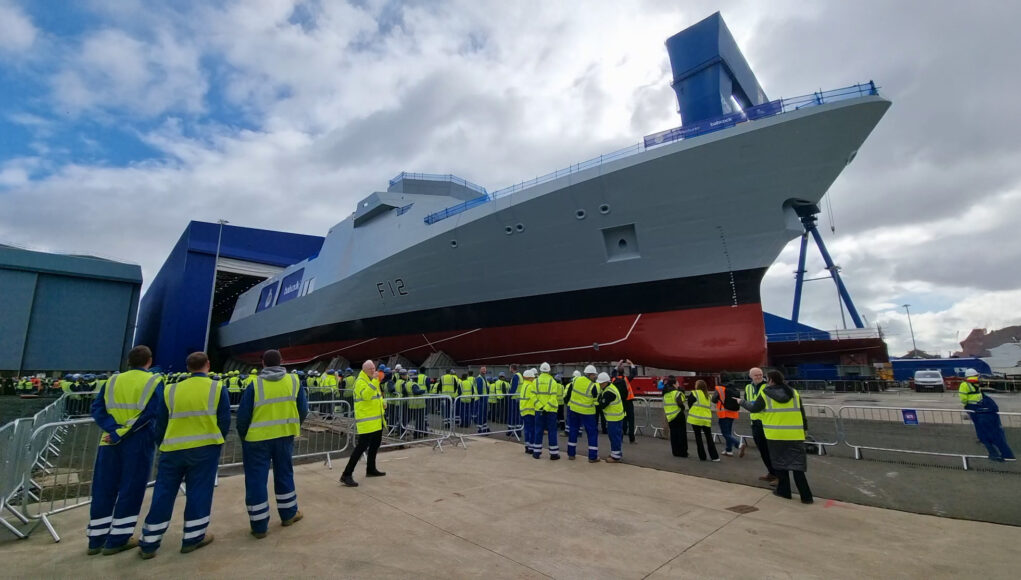
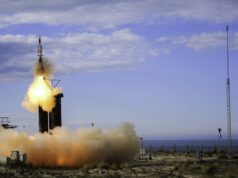
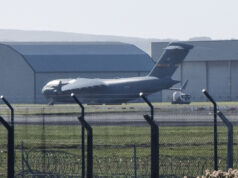

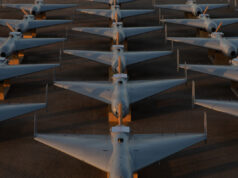

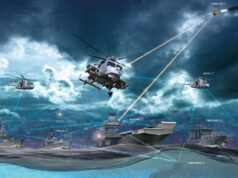

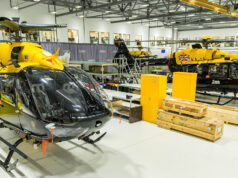



Hard to disagree with the fella
Tangible evidence of the success of both T-26 and T-31 class frigate programmes: Apparently random MPs are advocating further investment. Believe this falls under the systems engineering/management rubric of “glory, honour, praise and promotion of the non-participants.” Everyone is willing to be an advocate, after success has been demonstrated. Alternatively, If Mr. Downie is indeed a legitimate patriot, this observation willingly w/drawn. (We have a subculture of this type on this side of the Pond.) 🤔😉
Hi M8, Mr Downie is a Labour MP and I have no reason to doubt his patriotic credentials. He isn’t however a random MP he’s front and centre in supporting Rosyth dockyard as it’s the largest employer in his constituency. Spookily the yard was saved from closure years ago by the former MP for the neighbouring constituency who just happened to be Prime Minister Gordon Brown.
With Des Brown as defence minister at the time. The only reason why The QEC’s are only 65k tons is because any bigger and they wouldn’t have fitted through the dock gates in Rosyth.
ABCR,
Thanks mate, understand, hometown advocate. Observation w/drawn. Have experience w/ those who climb aboard successful bandwagon, once the heavy lifting is over. A rather pet peeve.
Is he a Scottish MP? Let me check. Oh yes he is. What a surprise.
Would he be so supportive of RN ship building if it was all being done in Portsmouth, Plymouth, Appledore, Tyne, Middlesborough, Belfast, Liverpool? Only Barrow left in England doing anything significant now.
There aren’t many issues that can’t be solved with more Frigates.
I feel the Government would consider a few more T31 over additional T26 purely on cost grounds. The T31s do appear to be a solid base to expand weaponry beyond current plans and a stretched variant (similar to Sheffield Class destroyers) might be a viable option in the future. Considering the amount of new infrastructure in the Scottish yards, it would be wise to have some builds in the pipeline once the 13 new ships are completed. Building both T26 and T31 for export would be one possible route to maintain excellence and skills.
A stretched variant is the Babcock proposal for the Type 83 destroyers. I believe it’s being called the Arrowhead 160.
Makes sense. I wonder how many crew will be on these vessels in twenty years as manned functions are replaced by automated systems. Demanning will become an increasing trend in all three services as the recruitment and retention of crews becomes increasingly difficult.
leh, I thought that the stretched Babcock T31 was for the Multi Role Naval Platform T32, she would have a mission bay much like the T26, a multi mission flex deck under the flight deck and a stern ramp.
As for an Arrowhead 160 can can find no information for this designation.
I can’t post links in this CS, but go to the Naval News article on the Type 83 and FADS, it’s mentioned there. NN usually have slightly better info than NL or UKDJ as they are in direct contact with reps from the companies.
That ‘AH140’ comment is really interesting and I thought a lot about it at the time.
It’s clear that a simple 20m extension to Type 31 isn’t possible, but what about repeating the AH140 process but using an air defence destroyer as a parent design? We are deepening ties with the Japanese and they have several destroyer classes that might be suitable, for example.
I’ve seen your Shipbucket sketches over on the SP forum for the Type 83 destroyer, and whilst I appreciate the idea, I don’t think that’s what Babcock is getting at. They’ve long suggested that AH140 could be used in the AAW role, and I expect that lengthening the hull will be used to accommodate more systems and weaponry. I don’t think we’ll see any use of a second foreign design in the AH140 family.
Oh, you read SP as well?
AH140 is already big and stable enough for a pretty good radar setup if we wanted an AAW frigate.
But I’ve also played with Shipbucket and the statistics for trying to add 20m of length into the AH140 design, and it’s just not designed for that sort of length/beam ratio. There are a few destroyers that are similar, but they will have a structure designed for it.
I wouldn’t mind using the T31 method for T83 at all, it worked wonders in a quick programme for T31 and it cuts down on early design costs which caused grief for T26 and the QEs.
Yeah, I’m Reuben James on that forum (not my real name).
My concern with going down that route would be the loss of critical design skills within the shipbuilding sector. I’m not sure about the Type 31’s extensibility, though Babcock may have made alterations to the design (much in the vein of the relationship between BAE’s Future Air Warfare Command Ship and their Type 26 frigate) that mean that it’s not simply a longer Type 31, but rather a development of the system that has been fully fleshed out.
It sounds like T31 had a complete design review, but not a redesign, so I’m confident that a similar process would retain the second design team in the UK.
And I’m a bit worried about the FAWS. Hopefully it’s common with the T26 in the “we’ve tried to use the same components and systems where possible” to savr operating costs rather than shoehorning the radars and CMS in the smaller hull to save initial design costs.
And from N-A-Bs comments on NL, there really isn’t any way of changing every aspect of the design without it costing a whole load of money.
“It sounds like T31 had a complete design review, but not a redesign”
You are wrong.
“It’s clear that a simple 20m extension to Type 31 isn’t possible”
“..it’s just not designed for that sort of length/beam ratio”
Says who? A 20m stretch would take the T31 to approx AB III dimensions, length and beam.
And ABs were designed from the start to have those dimensions.
Ships aren’t like submarines where the forces from manoeuvring aren’t all that significant relative to the basic structural requirements of a pressure hull, adding a bit of hull for more VLS amidships or on the bow would change the whole system when it comes to hogging in waves etc.
There isn’t really a ship class I can think of in history that has been simply ‘made longer’ without a structural redesign.
Type 42 destroyer.
+ Type 22 Batches 2 & 3
I think T83 will be a new 10k ton BAE design incorporating he best of T45 and why wouldn’t it.
I saw Babcock had proposed a modestly stretched T31 for T32- bigger mission bay, smaller flight deck and stern slipway – optimised for launching and recovering USV and UUV drones. Would make a more feasible follow on at Rosyth.
The T45 hull is a very cheap, nasty and noisy one but we not still be designing. The T26 hull is quite the opposite as reflected in cost and international interest.
Complete rubbish. The type 45 hull is not cheap nor nasty. And as for noisy, l was quite recently talking to a serving officer on a type 45 who told me, up to about 13 knots ,the type 45s are actually very quiet, above that cavitation of the propellers causes some noise, but they are quieter than the shios they replaced. In fact at one point , Bae proposed the hull as the basis for the antisubmarine frigate.
As i think SB has pointed out previously – post PIP the Type 45’s might now be very quiet runners,being able to use the Propulsion System as designed.
Issues with noise are not just limited to driving wedges into the closed hatches to stop them rattling. Interestingly the navy originally wanted to refuse to rakevthem on, mainly due to power issues, but were over ruled. In terms of anti air warfare they are world beating.
“I think T83 will be a new 10k ton BAE design incorporating he best of T45 and why wouldn’t it”
Because the Type 45 design will be 40 years old when the Type 83 will need to be built i.e the time span between the start of world war 1 and 9 years after the end of world war 2.
I think you’re misconstruing Paul’s words.
The best of T45 is the radar and CMS. BAE could design a new hull, with known propulsion components (DGs and the GT) from T26 and with a fixed panel evolution of SAMPSON, the guns from T31 etc.
The USN has used AEGIS for 40 years, with the same family of missiles, and nobody is complaining.
With BAE just completing their new assembly hall with £300m investment i don’t think they’ll want to or can afford to lose the T83 selection to Babcock but the competition will be good. Future T31/A140 could see AAW variants to complement the T45s and support the littoral groups. Maybe even possible exports? May the best ship win!
It will be interesting to see what ships are built next at Rosyth; more T31s, T32s or MRSS. The BAE Janet Harvey Hall is 170m long, about the same length as a Ticonderoga or a Bay. Reading how much H&W is investing they must be on a promise of something after FSS. We haven’t seen yet the chosen design for MRSS.
At least 5 more frigates are needed.
If the division of three is important for ops why not another T26 and 4 more T31s for starters? Hopefully the T31s will get their mk41s soon and with missiles. Like to see the 6×4 CAMM ExLS’s replace the 6 CAMM silo or at least get these reworked to take 9-12 CAMM for the same size footprint if possible. Probably won’t happen. They want to “increase lethality” so why haven’t they gone with 2x ExLS for 48 CAMM on the T45s? My rant. Back to my ☕️.
*rule of three
The SNP stance on defense is embarrasing! I am lost for words……
I suspect it’s mostly political as the SNP will have to change its posture regarding defence issues before the next election.
Defence !
SNP are Anti Britain and true passifists in everyway. Scottish folks now truly fed up with them so expect a real kicking in the next election up North. They only support the freaks and mentally ill over normal folks as we have seen time and again. Yes EMBARRESING
“Is now a front line nation.”
As far as im concerned, Scotland always was.
Yes but you’re talking Hadrians Wall era stuff !
“You can take my life but not my freedom”.
Men in skirts always a bit worrying.
I agree I really can’t understand the complacency in realising just how vulnerable they could become especially their Norwegian outpost in the Shetlands.
I’ve been thumping the tub on continuous production of second-tier escorts for years and over the last few years production at Rosyth in particular. It would cost us £360m a year, maybe less in 2025 terms, to produce a fully equipped T31 every 15 months. So forget thinking about another batch of 3 or 5. Just keep production going indefinitely, occasionally changing the specification to fill new needs: AAW, ASW, mothership, patrol frigate, etc.
Those we can’t use in the Navy, we sell or even mothball as a reserve. We can’t accept Treasury reluctance any more.
We can’t pay for a whole T31 in a year
Of course we can, currently we choose not to. The thing is with a constant drumbeat the price per ship actually comes down as developmental costs are spread out across more ships. If we chose to have 8 type-31s for instance we would be able to replace the oldest of them after 10 years of service.
With the speed of technological development at the minute that’s actually not an unreasonable time frame. For the most part the physical infrastructure of the ships won’t change it is more the systems being integrated into them. If you have a step change once a decade in that fit out it is still a reasonable time frame to review what has changed since the original design was finalised and to work in any updates you want to make.
After that you set the specification for the next decade worth of ships. Older ones you sell on to Ukraine or the Baltic States or the nations around the South China Sea. Almost all of them would quite like a decently equipped just run in GP Frigate at a decent price. If you sell them at £180m then that’s funded half your build for the replacement.
The problem as always is political will.
Just what is needed and of course they will not break down as often as the older clapped out hulls we have today. Savings all round and a happier crew too. Win’s all round and the Gov gets most of that investment in taxes etc anyway.
I suggested £450m over 15 months (£360m a year) for a more fully featured ship. Even if we sold at a third of the new price rather than half, once you consider that around 40% of the build price comes back to the Treasury in taxes, the country actually ends up paying £120m capital costs for 10 or 11 years use.
Although the budget will still need to fork out the full cost up front, it’s outstandingly good value in the longer run.
We could, but I suggested every 15 months, because I think we can get away with £360m pa more easily than £450m per annum.
Nice to have extra subs and the unmanned fleet; still need a lot more supports for the surface fleet… and yes, must have some form of continuous production lines that have an option to increase production rates quickly!
What we want is the kit to properly defend our nation and our allies.
I am confident that in producing that kit the will be plenty of jobs created. What you don’t do (if you have an brain cell) or two is just create defence jobs randomly to suit some socialist agenda. Work out exactly what kit we need and then work out where we can best build the skills to build the kit and get on with it.
Also the is no rule that all ship building needs to be done in Scotland.
More ships would certainly be welcome, but given the current build schedule, the government still has plenty of time to address this.
In the meantime, priority should be given to expanding the Army’s armoured capability, specifically by adding another armoured brigade. This would allow the UK to (just about) maintain a continuous rotational deployment of one armoured brigade.
The army does not so much need another armoured brigade it needs to ensure the brigades it has are fully deployable that means
1) giving the 1st deep strike reconnaissance brigade Mec or armoured infantry and full CS, CSS
2) give the 4th infantry brigades infantry battalions Mec or protected mobility and full CS CSS. Including self propelled artillery.
3) give 7th Mec battalion full CS CSS including self propelled 155mm artillery
4) maintain a 3rd MBT regiment.
When I say “another armoured brigade,” I’m not expecting them to build a new 12th or 20th from scratch anytime soon—though that would be ideal, especially while retaining the 1st Deep Strike Brigade.
The reality is, we currently can’t sustain continuous deployment of an armoured brigade. Having only two isn’t sufficient, and while three would make it possible, it’s still far from ideal.
At last someone saying Scotland in particular is indeed a frontline state or at least could very easily become one if we don’t take defence seriously. Russia could certainly in the future target and potentially even occupy Norway. It’s one of our prime NATO functions to prevent that but if we didn’t then this Country as a whole and Scotland especially would be at the mercy of Russia, the North Sea open to Russian domination. It would be a nightmare scenario so can’t be contemplated just because it seems remote at the moment. The occupation of France seemed even more remote in early 39. But even short of this worst case scenario the region is a weak point that Russia will inevitably wish to exploit and weaken our capabilities.
In reality the next order is going to be the MRSS.. as bae is going to jammers with T26 then T83 I suspect MRSS is going to be a Babcock build, especially as they are now going to essentially be complex( ish) commissioned warships.
The issue is not so much how many ships the RN/MOD want to fund… or even the old “ we don’t have crews” argument.. the issue is industrial capacity..
So if we want more T31 frigates we will probably need to delay MRSS.
Hi Jonathan I’d love to know why you suspect that the MRSS will be a Babcock build ? These ships will have to be in the 15 / 16K tonne bracket and that’s a lot bigger than a T31 and its build Hall. The 2 main docks can’t used as one is allocated to supporting the QE’s and the other decommissioning the old Submarines. I think the obvious yard is H&W at Belfast provided they manage to build the FSS on time, anything else£just makes no sense and you just end up with shutting our last Big Ship capable Yard.
To me it makes far more sense to keep the 2 Surface Warship pipelines going in competition with each other and have Navantia keeping them on their toes.
I think the timing is off for them being built in Belfast, FSS will not be finished until 2032 as a programme if they are lucky.. and the first MRSS is meant to be commissioned for 2033.. Im not sure the timings add up..
MRSS is also looking like it may be quite a complex ship with MK41 silos and the capability to take DEWs as well as mission bays, fight ops sensor fits etc so it’s going to be well in the complex warship range so more in the Babcock field to be honest… I honestly think they will shuffle the MRSS and T32 into a single 6 ship order.
size wise I’m not sure they are looking for something that big anyone..
Finally I think they will end up wanting more RFA vessels in the 2030s… no point expanding the surface fleet without rebuilding the RFA so I think you may see an order for a couple of oilers ( replacing the waves). Also the point class contract will end in the 2030s and as there is literally no requirement for vehicle lanes in the MRSS specs as discussed so far.. I think the RFA will get a fleet of logistic vessels to essentially replace the points and the logistic roles of the bays and finally you have the undersea infrastructure MROSS vessel, So I can essentially se Belfast becoming the defacto RFA yard.. which who’ll keep it very busy to be honest.. if you have a 17 vessel RFA ( 6 fleet tankers, 3 FSS, 6 logistic vessels and 2 MROSS) that will essentially keep a yard busy for ever….
Galicia class LPDs built in Spain?
The last of UK GBAD is shocking as hinted at by the Wargame..
An AEGIS ashore or THAAD battery should be purchased to protect the Sub fleet and MPA
Lower tier a more capable T31 derivative with CAAM -ER and or a higher end missile could provide a guard ship.
At least 9 would be needed to station 3 at sea on an enduring basis , which could be surged in times in wartime.
Once unmanned vessels get developed this could be expanded. Even merchant conversions with bolt on launchers would add some defensive depth.
No money? Further cut the aid provision.